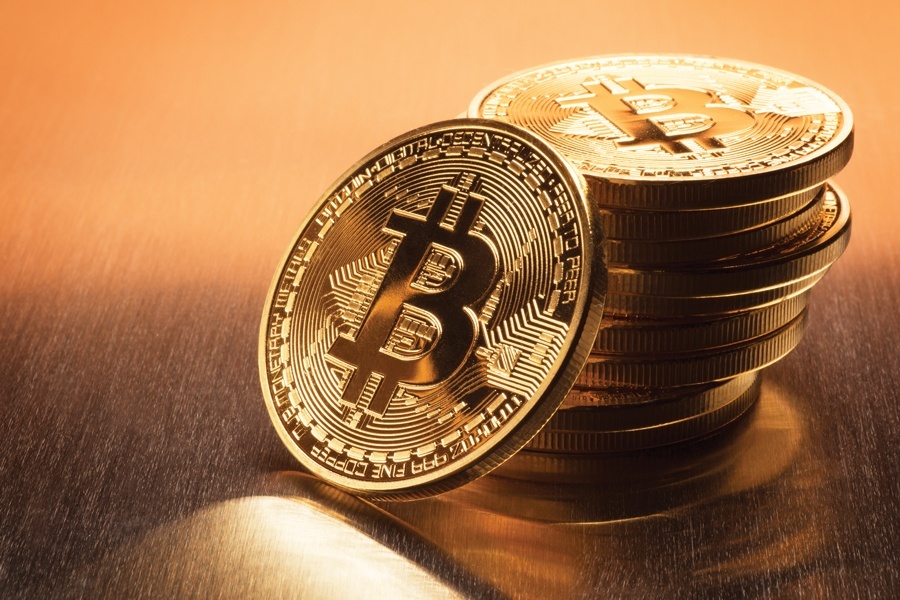

To cryptocurrency true believers, Bitcoin is the ultimate store of value, the most solid hedge against the rampant inflation manufactured by reckless central banks and their money-printing. To skeptics, the crypto world as a whole is a mirage whose massive run-up past $2 trillion was simply the speculative by-product of the extraordinary amount of easy cash that’s been sloshing around in the global economy — in effect, a big bubble.
Both of those theories are about to face their biggest test yet.
Bitcoin, the original cryptocurrency, emerged more than a decade ago out of the ashes of the global financial crisis as a bypass to the banks and government agencies mired in Wall Street’s great calamity at the time. The digital token steadily gained a following, inspired a rash of wannabes and endured some wild rides. But it wasn’t until the next big crisis, Covid-19, that the market really took off.
Crypto exploded after March 2020, when the Federal Reserve and Congress unleashed trillions of dollars’ worth of stimulus to blunt the pandemic’s economic blow. A bunch of that cash made its way to digital assets, turbocharging prices. Bitcoin soared 305% in 2020 and notched another 60% the following year, topping out at a record of almost $69,000 in early November. Since then, though, it’s been on a relentless slide, weighed down in large part by the central bank’s hawkish pivot. Now, with odds rising that policy makers will commence a series of rate hikes as soon as March — just one of several steps they’re set to take in removing liquidity — it remains to be seen if the crypto ecosystem can hold up without it.
It’s not looking good so far: Bitcoin is already down some 40% from its highs, while No. 2 coin Ether and other “altcoins” have also suffered steep declines.
“If they’re going to hike rates three times in 2022 and keep the program, and the era of low rates is over, we’re going to really see how much people believed in their Bitcoin-crypto thesis,” said Stephane Ouellette, chief executive and co-founder of crypto platform FRNT Financial Inc. “I would expect that the Fed getting more and more hawkish is very bad for valuations.”
Michael O’Rourke, chief market strategist at JonesTrading, agrees. “The Federal Reserve’s seemingly perpetual asset purchases have been the cornerstone for crypto investing,” he said. Should the central bank follow the path laid out in its latest minutes release, which showed that Fed officials are prepared to move faster than expected to lift interest rates and potentially shrink the bank’s balance sheet, then “that would immediately undermine the key bullish thesis behind Bitcoin and many other cryptos,” O’Rourke said.
For most of its 13-year history, Bitcoin has enjoyed an environment of easy monetary policy and zero or negative rates. While there is no straight through-line from the Fed’s coffers to Bitcoin buy-orders on exchanges, there is a connection, according to David Tawil, president of ProChain Capital, a crypto hedge fund. For one, the Fed buying any type of asset can have ripple effects and lift prices of other investments. “All the buying power, all the investable power that exists has to go somewhere,” he said by phone.
Second, with rates at rock-bottom lows, investors have been forced to scour the market for higher-yielding opportunities and many turned to crypto given its ability to post outsize gains. Think of a junk-bond investor who was accustomed to high-single-digit returns even on bad days, said Tawil. “He’s going to be forced to put money into something ‘riskier,’ but, more importantly, something that yields something he’s used to getting.”

Former Northwestern Mutual advisors join firm for independence.

Executives from LPL Financial, Cresset Partners hired for key roles.

Geopolitical tension has been managed well by the markets.

December cut is still a possiblity.

Canada, China among nations to react to president-elect's comments.
Streamline your outreach with Aidentified's AI-driven solutions
This season’s market volatility: Positioning for rate relief, income growth and the AI rebound
